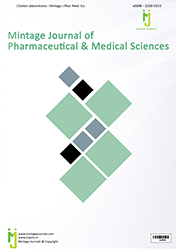Abstract
SETTING MRLS FOR PESTICIDE RESIDUES IN FOOD BASED ON EU UNIFORM CRITERIA
Author(s): VALENTINAL. CHRISTOVA-BAGDASSARIAN1, JULIETAA. TISHKOVA1, JULIANA RUMENOVA TASHEVA-PETKOVA2, M. ATANASSOVA
Objective: Pesticides are used worldwide. They are applied during the growing season and part of the amount may remain in or on treated crop. Pesticides can drift to nearby areas and contaminate crops that were not treated. The MRLs are the maximum amount of a pesticide permitted in or on food (& feed), expressed in mg/kgor ppm and always defined for the active substance –crop combination. MRL should be set according to residue trials under Good Agricultural Practice (GAP) and under the condition that: Daily Consumer Intake < Acceptable Daily Intake. The residue definition of active substanceis derivedfrom plant and animal metabolism. Supervised trials are the primary source of information for estimating maximum residue levels and calculating International Estimated Daily Intake. The agricultural practice the worst-case situation should be used to generate data from supervised trials to define the MRL. As the number of controlled field tests, and hence the data for MRL proposal is not large, the usual statistical models are inappropriate.Methods:Two methods for calculating proposed pre-harvest intervals (PHI) and maximum residue levels are used. The first one (Rmax) has proved its worth in many cases since 1981, and the second (Rber) has been developed by the Federal Biological Research Centre for Agriculture and Forestry in Braunschweig/Germany. Both methods are described briefly. The first one is suitable for a larger number of data. It assumes a normal distribution of random variables, which are not always assumed with sufficient certainty. The second one uses a non-parametric distribution-and it is appropriate for more limited number of trials. Several case studies are discussed. The MRL Regulation on pesticide residues in food is a great progress towards better protection of children and consumer in general. Conclusions:Uniform criteria have to be used for evaluation of residue trials and MRLs setting process. Knowledge of the European approach in establishing the pesticide residue levels is useful for all countries in the world that have a policy of restrictionof persistent organic pollutants in the environment aiming towards food safety for people of all ages

ISSN: 2320-3315
ICV :81.58

